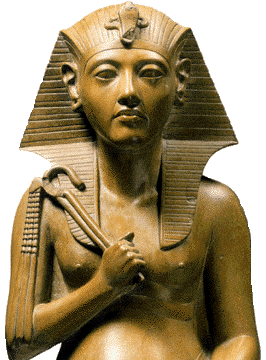
Soon after his death the followers at Amana, unable to understand what their Pharaoh had been preaching, abandoned the city, and returned to Thebes and the familiar Gods. The priests branded the name Akhenaten, as a heretic. It was erased from the monuments of Egypt.
It was his son, a young Pharaoh named Tutankhamen who the world would get to know. King Tut moved the capital back to Thebes and returned to the old religion.
Akhenaten's successors, the generals Ay and Horemheb reestablished the temples of Amun they selected their priests from the military, enabling the Pharaoh to keep tighter controls over the religious orders.
Later Pharaohs attempted to erase all memories of Akhenaten and his religion. Much of the distinctive art of the period was destroyed and the buildings dismantled to be reused. Many of the Talitat blocks from the Aten temples in Thebes were reused as rubble infill for later pylons where they were rediscovered during restoration work and reassembled. Technorati Profile
Three thousand years ago, the rebel Pharaoh Akhenaten preached monotheism and enraged the Nile Valley. Less than 100 years after Akhenaten's death, Moses would be preaching monotheism on the bank of the Nile River, to the Israelis. The idea of a single God once the radical belief of an isolated heretic is now embraced by Moslems, Christians, and Jews throughout the world. The vision of Akhenaten lives on!
Amarna was lost in antiquity until the end of the 19th Century. It was uncovered by the founder of modern Egyptology, Sir Flinders Petrie. They discovered a vast lost city in the dessert with temples, palaces and wide streets.
The cult of the Aten is considered by some to be a predecessor of modern monotheism


